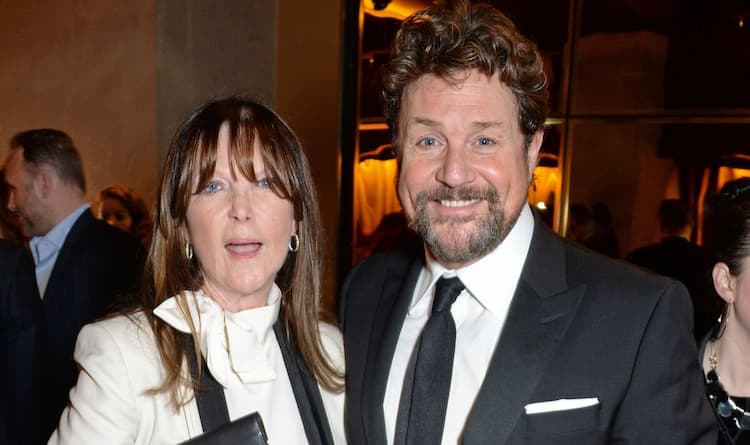Biography
Cathy McGowan is a British broadcaster and journalist best known for hosting the 1960s pop music television show Ready Steady Go!.
Age
She is 81 years old as of 2024. She was born in 1943 in the United Kingdom.
Family
on 1965, McGowan’s brother John McGowan was a disc jockey for King Radio, a pirate radio station operating from a fort on the Thames Estuary.
Husband
In 1970, McGowan married actor Hywel Bennett. They had a daughter named Emma. She has been Michael Ball’s lover since the early 1990s, after their marriage was dissolved in 1988. Ball is godfather to McGowan’s grandson, Connor Bennett.
Capital Radio
McGowan remained in journalism and television. She served on the board of Capital Radio in London when it first began operations in 1973. on the late 1980s, she worked for the BBC’s Newsroom South East, specializing on entertainment. She interviewed celebrities, including several she knew from the 1960s as well as singer Michael Ball, who later became her lover, and Deborah Harry, lead singer of Blondie, whom she considered as the most beautiful woman she had ever encountered. McGowan presented the Brit Awards in 1990. McGowan co-hosted a show featuring British comedians to commemorate Amnesty International’s 30th anniversary in 1991, alongside Alexei Sayle and Jonathan Ross.

Ready Steady Go!
Prepared Consistent Go! (RSG) was first transmission in August 1963, agreeing with the ascent of the Beatles in England and globally. As one student of history of TV reflected during the 1970s, “the transformation affected TV … furthermore, knowing the past reporters were to see the year (1963) as a line of boundary drawn between one sort of England and another”.
With its trademark, “the end of the week begins here”, RSG was displayed on Fridays from 6 to 7 pm. Its unique moderator Keith Fordyce (1928-2011), a robust of the BBC Light Program and Radio Luxembourg, was joined in 1964 by McGowan and Michael Aldred. McGowan, enrolled as a guide from 600 candidates, had been in the design branch of Lady’s Own. She is said to play got the part in a “run off” with writer Anne Songbird, later a Radio 1 plate jockey, by replying “style” to an inquiry from Elkan Allan (1922-2006), RSG’s chief maker and head of diversion at Rediffusion, concerning whether sex, music or design meant a lot to teens.
McGowan appeared to be in line with the times, “the young lady of the day”, as per Eric Burdon of the Creatures – and, through her design sense, obtained the moniker, “Sovereign of the Mods”. (This term has been applied to other people, like Dusty Springfield and, in New Zealand, Dinah Lee.) A lot of her allure lay in the way that she was the age of RSG’s watchers: young ladies viewed her as a good example, while men were drawn in by her looks. Anna Wintour, future proofreader of American Vogue, was, as indicated by her biographer Jerry Oppenheimer, among youngsters whom the show acquainted with style. Another, Lesley Hornby, who turned out to be also called Twiggy, viewed McGowan as her champion: “I’d sit and slobber over her garments. She was a courageous woman to us since she was one of us”.
A comparable compassion reached out to the specialists that McGowan talked with. Donovan, sent off in 1965 by his appearances on RSG, reviewed McGowan as the “youthful Mary Quant-look leader” (Quant being the main English defender of the smaller than usual skirt, which McGowan promoted), with whom he fostered an “nice” style of on-screen discussion.
McGowan was an early supporter of Biba, whose first store opened in September 1964, and had her own design range at English Home Stores. She embraced a versatile make-up set known as “Cathy’s Endurance Unit”. Barbara Hulanicki, who established Biba, saw that “the young ladies aped Cathy’s long hair and eye-covering periphery and soon their little faces were developing weighty with stage make-up”. Julia Baird, relative of John Lennon of the Beatles, reviewed how, regardless of wearing bruised eye make-up, dark polo necks and colored dark pants “à la Cathy McGowan”, she couldn’t persuade concierges at the Sinkhole Club in Liverpool, where the Beatles came to noticeable quality, that she was north of 18, the age for affirmation. It has been guaranteed that the development in 1966 of an English Society for the Safeguarding of the Miniskirt was provoked by McGowan’s demonstrating that she would wear a long skirt on RSG.
After Fordyce’s takeoff in Walk 1965, McGowan kept on introducing RSG until it finished on 23 December 1966. In 1965 a choice that specialists ought to perform live gave it quickness that its BBC rival, Top of the Pops (1964-2006), never gained; to be sure, the last option held a Mancunian model, Samantha Juste – in TV, McGowan’s opponent – as its “circle young lady” until 1967. Despite the fact that RSG’s energy had started to hail, its effect on music and, through McGowan, on the “swinging” ’60s all the more by and large was generally recognized. As Sandbrook put it, “On account of the energetic charismatic skill of McGowan and her kindred moderators, the arising youth culture that had whenever been restricted to the capital [London] or to the extraordinary urban areas could now be seen and duplicated very quickly from Cornwall to the High countries”. The performer and jazz pundit George Melly thought RSG “made popular music work on a genuinely public scale … It was practically conceivable to feel a tremour of pubescent energy from Land’s Finish to John O’Groats”. McGowan, who was a 5 ft 4½in (1.64m) brunette, displayed and furthermore introduced a show on Radio Luxembourg.
